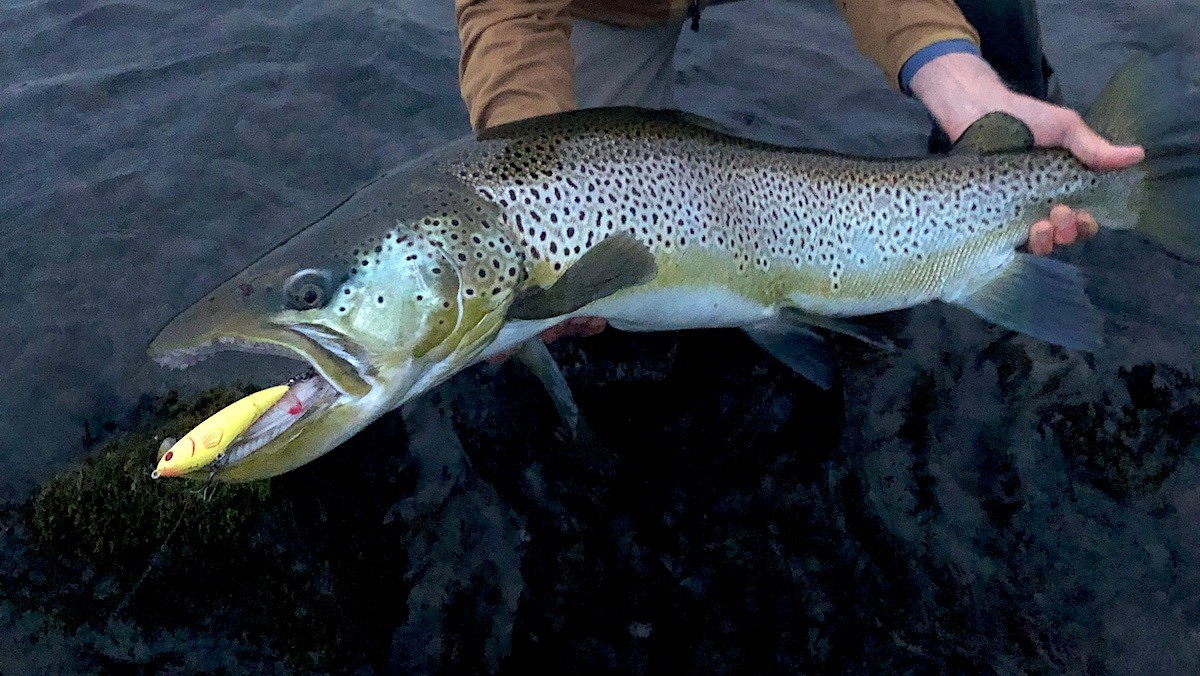
I just rolled my eyes when I saw the lure. Logic and conventional wisdom are no match for my father’s fishing hunches. My irritation belonged elsewhere anyway—with the wind, the miles of unproductive lakeshore, and the omnipresent gnats trying to slurp all the liquid from my eyeballs. At 11 p.m. in the subarctic summer my sunglasses remained on to keep the demon insects at bay, so Dad couldn’t register my look of disapproval. He walked off, churning the surface with his ridiculous, 5-inch-long muskie plug. I focused on my streamer. We were almost to the end of the beat anyway.
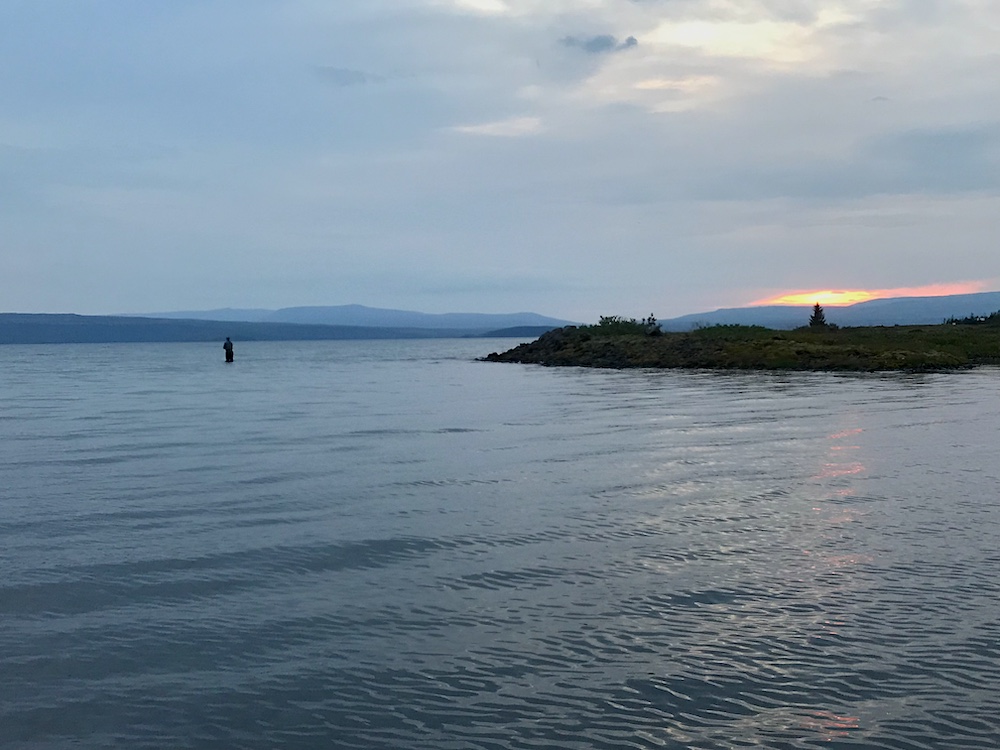
Day Two of a three-and-a-half-day “layover” in Iceland—why not fish into the night? Alaska isn’t the only land of the midnight sun, and the fishing section or "beat" reservation was good for 24 hours. We’d put in a solid seven-hour session in the morning, with Dad taking a strategic bank nap while I flailed at Arctic char rising in the adjacent river. When I realized they were eating the same Chironomid buzzer dry flies we get back home it became easy, and pops woke up just in time for the action. Then we fished a mile of lakeshore before dinner.
Add this to your list of lucky fishing foods: horse tenderloin. An Icelandic staple. It reminded me of elk, but with that great grassy flavor of a good beef steak. Dad looked at the menu for about five seconds, which is about how long I looked at the Google Maps list of nearby restaurants before selecting the bar-and-grill on a river half an hour away. They even had a convenience store to sell us some snacks for the next day’s adventure. Recharged, we were ready to return to the gnat swarm.
IcelandAir allows travelers between North America and Europe to layover in the capitol city of Reykjavík (pronounced “rake-ya-vick”) for up to a week. My mom and my sisters stayed in Scotland for a few more days after our family trip there, and Dad and I headed toward home early—with an-all-too-short stop in Iceland. I rented a subcompact Kia for about $250 total, got a cheap AirBnB in downtown Reykjavík, walked the commercial fishing wharf, and dove straight into the local cuisine.
Dad read the sign as a joke at first. “Sæta Svínið Gastropub Icelandic Platter: Smoked Puffin, Minke Whale, Lightly-Cured Arctic Char, Horse Carpaccio.” No joke. Sold. We could hardly decide on a favorite. I was slightly disappointed we couldn't try hákarl, Iceland's infamous fermented shark dish, but I've since heard that it's mostly inedible to non-Icelanders.
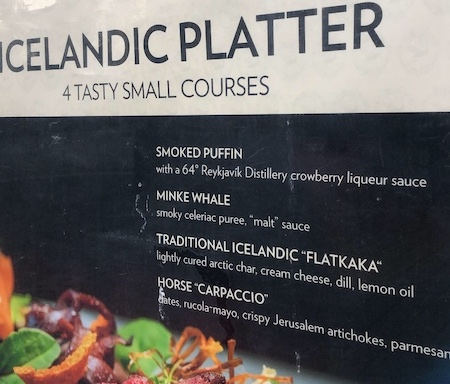
Early morning took us into the Highlands. Dad and I amused ourselves butchering the names of streets and towns, many of which contained 20 or more letters—some of which don’t even exist in English. The Vikings discovered Iceland around 870 AD, and the Old Norse language they brought hasn’t changed a lot since, now almost indiscernible from modern Norwegian. Big glacial rivers, black volcanic mountains, geothermal vapors, greylag geese, flocks of sheep, and stocky horses spread across the tree-less moonscape as we drove higher into the interior.
Few Icelandic rivers allow foreigners to fish without a guide. Certainly not the good ones, nor any that get Atlantic salmon. But some are quite affordable—once you swallow that American pride in public waters and the DIY ethic. When in Rome, we figured, when we booked a day on the Tungnaá.
Krístján Rafnsson, the outfitter at FishPartner who helped me figure out how to maximize our three days on his home island, met us outside his spartan but cozy Highland Lodge. After breakfast, we suited up and headed out with our guide Benedikt.
Clear-green as Icelandic gin, the Tungnaá River weaves through tight, lava-flow slot canyons, surrounded by verdant tundra and wildflowers. It was unfishable glacial concrete in color until construction of a hydroelectric dam lowered and cleared the water in 2013. Dad and I each landed a handful of brilliant orange Arctic char from 15 and 19 inches, with one old, crazy-eyed beast of about 25. I fought a giant brown trout for nearly a half hour, almost getting it in the net twice before it finally broke me off in an underwater cave. Another nice brown an hour later provided some salve to my heartbreak.
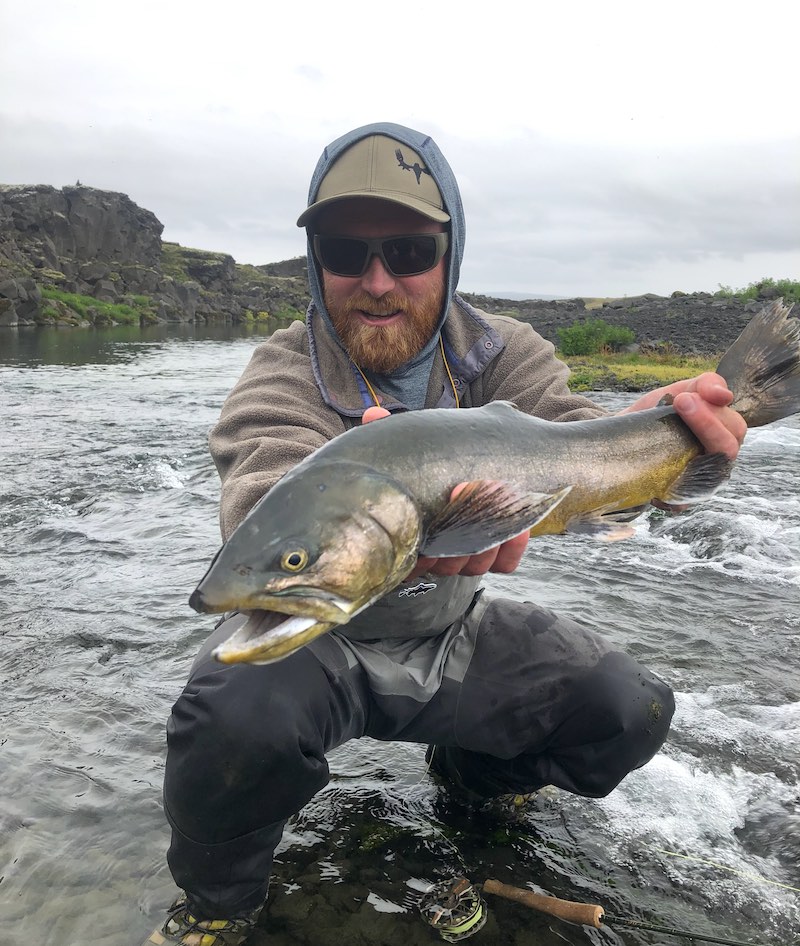
After a lodge dinner of Arctic char ceviche, Krístján shared stories and photos of unbelievably large native brown trout he’d caught around Iceland, including several from the big lake, Þingvallavatn, where we’d be fishing the next day. The largest waterbody in Iceland at 32 square miles, it also holds historical distinction as the seat of the ancient Icelandic parliament, the Althingi, founded in 930 AD. The lake, pronounced “Thing-vala-vatin,” sits on top of a tectonic rift between the North American and Eurasian plates, plummeting to nearly 400 feet at its deepest. Thousands of underwater springs keep the water a constant 37 to 39°F and promote abundant insect life, plankton, snails, and native three-spine sticklebacks. Each forage species feeds one of the four distinct strains of Arctic char in the lake—piscivorous, plankton-eating, snail-eating, and dwarf char.
But we didn’t fly halfway around the world to catch 4-inch dwarf char.
Inevitably, the conversation with Krístján veered to the other fish present in the lake—a unique strain of brown trout thought to have evolved in isolation since the Pleistocene ice age ended about 12,000 years ago. They grow larger there than almost anywhere else on Earth. Historical records speak of 30 pounders before the Steingrímsstöð hydroelectric dam cut off much of their spawning grounds, but anglers still catch a surprising number of 20-plus-pounders every year, stretching tapes to 40 inches and beyond.
Benedikt told us earlier that day that the big fish get that way on a feedbag of sticklebacks and char, but some of the very biggest have been known to dine on ground squirrels and even ducklings. I could see the cogs turning in my dad’s brain.
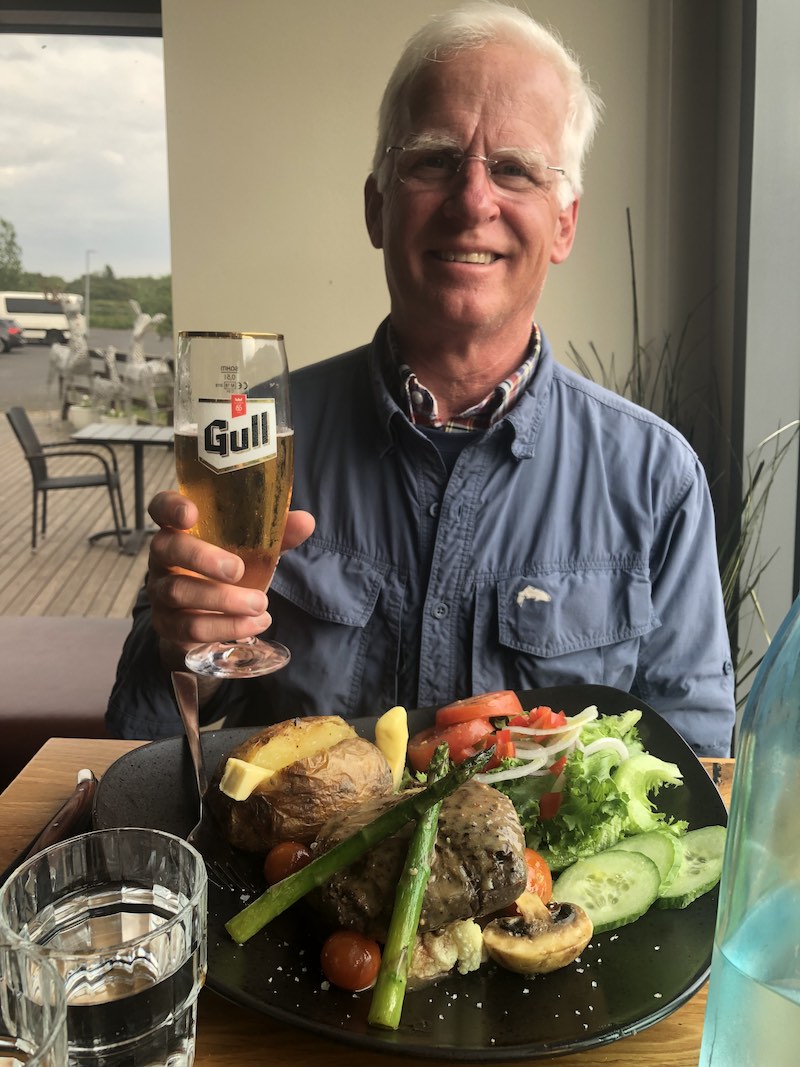
After dinner, we returned to Þingvallavatn and parked at the furthest-north point we’d fished to previously. Krístján had suggested the proper etiquette was to fish through each station of the unlimited, unguided beat throughout the day, and we intended to play all 18 holes, damnit. While we landed some nice char in the river, the lake only gave up snakey, baby brown trout of 10 inches or less. For the last station of the beat, Dad tied on the Hail-Mary duckling—Larry Dahlberg’s legendary Whopper Plopper.
We got to the point. Nothing happened. I was already thinking it, but Dad suggested that we’d seen more sticklebacks and baby browns at that one deep spot by the cliff. Coming on midnight, we figured we wouldn’t be getting in any other angler’s way.
I tied on a big, bright streamer and started launching as much fly line as I could into the eerie half-dusk. Dad was outdistancing me by easily a factor of three with a sturdy spin rod, braided line, and a 1-ounce topwater bait. After the fifth of such rocket launches, maybe a quarter of the way back, a splash like a tire had fallen off an airplane broke the silence. Line poured off Dad’s reel. And it went, and it went, and it went. For more than a full minute the fish shot off, completely undeterred by the stiff drag. We watched closely as the reel arbor became visible through the wraps of line.
The fish finally, thankfully, turned and began to pendulum-swing widely across the bay, dragging what looked like half a mile of thin, 20-pound braid. Over the following 20 minutes of reciprocal exchange, Dad worked the fish toward a gravel beach while I stayed on the rocks above.
Then suddenly I saw it. A shout or scream died in my throat, emerging instead as some sort of grunt like I’d been kicked in the groin.
“Don’t tell me!” Dad shouted. “I don’t even want to know how big it is, in case we lose it.”
“OK, I won’t,” I stuttered. “I can’t even guess.”
As the fish lost ground, it eventually reached the hump of gravel in front of the beach formed by the wave action. It charged back at me toward the rocks, and I kicked pebbles in the water to change its course. It started thrashing and rolling on the surface so hard I puckered up, fearing for the 15-pound mono leader. But Dad kept low-angle pressure and took advantage of a lack of hydrodynamic tension on the surface to move the fish back into waist-deep water. I waded in as stealthily as I could. Then the fish came past me and I plunged both arms to the shoulder and gripped the fish tightly by the impossibly thick “wrist” in front of the tail. Hauling up, my whole body undulating with the kicks of the broom tail, I let go with my left hand, scooped under the belly, and bear-hugged the enormous brown trout.
Both my father and I kept repeating—almost chanting—the same four-letter word. Elation might begin to describe it. We took some pictures, including, at Dad’s request, an atrocious selfie, then prepared to watch our special fish depart. But before we did, lacking a tape measure, we laid it next to the rod in shallow water. It reached from the butt to the third guide, a length my dad would record back home at 38 inches—3 feet, and some change.
Dad hung it up after that, saying “I’ll never catch a bigger trout in my life anyway.” I made a few more casts with his rig then we headed back to our cheap hostel. We fished another, smaller lake for too long the next morning before making a mad dash to the airport to end our “layover.”
I returned home promising to never again roll my eyes at Dad’s hare-brained fishing ideas—a promise I may or may not be capable of keeping. Either way, I’ll do well to remember that instinct and intuition often triumph over conventional wisdom and logic, at least when it comes to fishing.

Images via Sam and Kevin Lungren.





Conversation